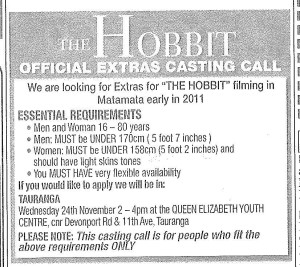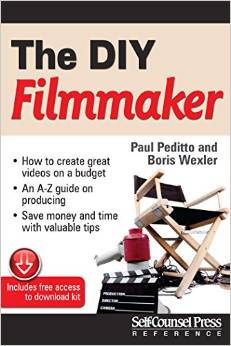Casting is WAY important for your movie.
Duh.
Casting the right actor could be 50-60% of eventual actor performance. Some say it counts 70-80%. Others venture it’s 90% of the battle.
Duh and duh.
The percentage doesn’t matter. Bottom line, the decisions made in casting will go a long way to deciding what the very success of your movie. Now here’s another duh:
The writer doesn’t make the final call. Not unless the writer happens to be the director and/or producer. Which is pretty much NEVER on a Studio movie, and RARELY on a 10mil+ budgeted Indie.
The casting priority pyramid parallels the final cut pyramid for Hollywood movies. Directors make final casting decisions. You, the writer, almost certainly won’t be in the loop on final casting decisions. Why would you be? You’ll be too busy running with your sandaled clay feet, making bricks for the same pyramid—without straw, Judah!—just where you belong.
Micro-budget, of course, changes the dynamic. Chances are good that if you’re a micro-budget writer you’re also either the director and/or producer. That means you’re not only in the room, but you might actually be the one deciding who gets hired. Yay!
With Jane Doe, we had a quarter million dollars, giving us Indie-level money that brought us a big-time New York casting agent, Marcia Shulman (who cast one of my fav movies of all time, A Christmas Story). She came in when my producer brother got the bright idea to leverage a powerful casting agent by promising a producer role (a strategy he used to get Paul Dano to act in his micro-budget film, Light And The Sufferer). We had 250K, a strong script, then Marcia came in giving us access to large agencies like Gersch, Paradigm, APA, which gave us access to actors like Calista Flockhart, Edie Falco, Adrienne Shelly, Joey Ragno, Elina Lowensohn, Vinny Pastore, and many more. Life is great when there’s Indie money. But what happens when you’ve got $35,000 total?
Choices happen. Up front, concerning casting, you’ll start with this: Name actor or not? You can write a two-day cameo that can be played by, most likely, a B-name actor who you will pay their rate. In doing so, they will loan their name to your movie. Paying them their rate for one or two days won’t bankrupt you and, possibly, they will take less $$ for a back-end participation. Point being, you will pay upfront $$ for a name that should help on the back end with film festivals and distributors. Doesn’t take a genius to know that name actors = sales. Your movie with no-name actors? Much dicier.
A not so well-known fact is that agents must inform their clients of any offer, which in turn increases your odds that the actor might actually read the script, which in turn increases your odds (from zero) that they might—yes, I know how much of a long shot it is—that they might be intrigued to take on your micro-budget for the pittance your offering up front if you juice-up back end profit participation. It’s worth a shot!
The other option: To not go the name actor route. While it’s true the vast majority of flicks that accepted into the Toronto Film Fest have name actors, plenty of micro-budget make Sundance every year that don’t. So, option 2 is saving that money you would give a name actor for a cameo role, keeping the money for production (our money’s on the screen, man!) or for your backend post-production costs (stop laughing but you are supposed to have at least the same amount as the production budget saved for post costs). Maybe you want to keep actor costs down, after all.
This leads to another decision: Even if you go no-names, you still need to decide if you’re going SAG or NON-SAG actors. There’s no one-size fits all advice I can give here. My situation in Chicago will not be yours in Omaha. While there isn’t much production money originating in Chicago, what there is is a stunning talent pool of actors. It begins in the drama schools of colleges like DePaul, Northwestern, Art Institute of Chicago, Columbia College. Add the astounding theater scene, 150+ theater companies producing regularly both Equity and Non-Equity. Throw in the five TV shows currently producing in town and you get the idea. Chicago is loaded. My odds of finding good NON-SAG actors goes through the roof here. How about your community? If you’re not drawing actors in New York or Los Angeles, who’s going to respond to that Craigslist ad? What are your options?
This is the reason you want to control micro-budget costs as script level. If you can limit the key actors to a limited number of days, it increases the chances you can make SAG low-budget $100-a-day offers to key actors.
With Chat, we considered making offers to a “name” actress for the role of Dr. Lauren. This is the juicy, bad-guy, Lady Liposuctionist From Hell doctor role. We scheduled her for two days so paying, say, $2000 per day was actually doable. The question was: Did we want that money for production contingencies, and/or for post costs, or for two days with a name-actress? We chose to go with a great local actress I teach with at Columbia, Cheryl Graeff, who pulled off some truly nasty work for that $100 a day.
We went SAG-minimum with six actors total. This is a large expense but only one of the characters, Falcon (Rush Pearson), needed to be paid for 15+ days. And the trade-off, what you put on the screen in terms of performance, cannot be overstated. Sure, you might get lucky with that Craigslist ad and grab yourself a fabulous free actress.
You also might not get lucky. And what’s that gonna look on the screen?
Making $100-a-day SAG offers opens you up to a whole different class of actor. You can post on Actor’s Access, Breakdown Express, make calls to local casting agents, put up notices at local acting schools, call local theaters, and yes, try Craigslist…
Which takes us to the moment of truth. The audition (next week).




